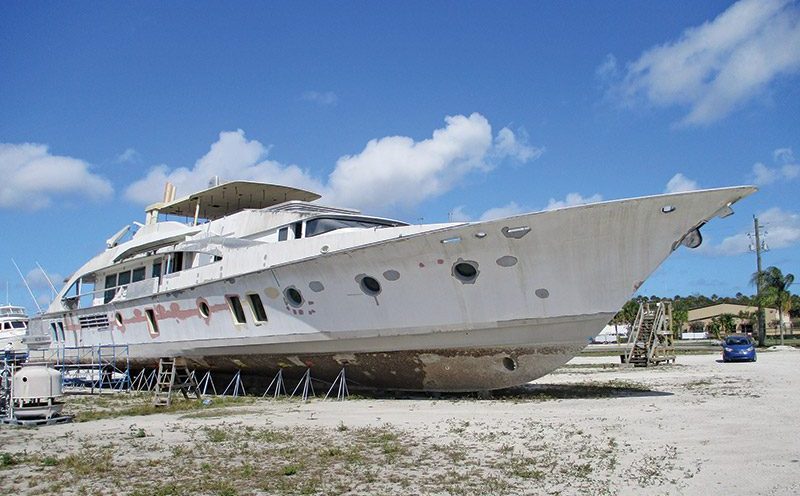
Up to press time, weather continued to delay the deployments of the Captain Patrick Price Memorial Reef and the Daymaker Charters Reef. After Willis Custom Yachts placed both the Last One and the Spirit of Palm Beach into the water, sea conditions had been too rough to sink these vessels safely. In the meantime, David Powell, Vice-President of MCAC Artificial Reef Fund, has been busy securing and cleaning a 142-foot motor vessel to be deployed this summer by the St. Lucie County Artificial Reef Program.
While waiting for the weather to improve, the Program has been awaiting monitoring reports from its consultants, Coastal Systems International and Ecological Associates (EA). EA has developed a Remotely Operated Vessel/360o drop camera methodology that, once perfected, will allow St. Lucie County to compare data over many years. It will also allow fish to be monitored that are often averse to the presence of divers.
Initial trials on the CCA Curtis Bostick Reef using this methodology revealed 10 species of fish in 5 families, including large numbers of blue runner (Caranx crysos), tomtates (Haemulon elegans), French grunts (Haemulon flavolineatum), and gray snapper (Lutjanus griseus), plus lesser numbers of greater amberjack (Seriola dumerili) and other species. This methodology also detected 22 species in 12 families on one reef on the Stan Blum Memorial Site including gray snapper (Lutjanus griseus), ocean triggerfish (Canthidermis sufflamen), sheepshead (Archosargus probatocephalus), black sea bass (Centropristis striata) and a single juvenile gag grouper (Mycteroperca microlepis).
The gag grouper was the latest in a growing group of juvenile fishes on St. Lucie County’s artificial reefs. Other fish species include black grouper (Mycteroperca bonaci), black seabass (Centropristis striata), gray snapper (Lutjanus griseus), scamp (Mycteroperca phenax), snowy grouper (Hyporthodus niveatus), and yellowtail snapper (Onchorynchus chrysurus). These juvenile fishes show that the County’s artificial reefs are providing habitat for juvenile fishes to grow to maturity, replacing the fishes that have been harvested.

The Artificial Reef Program also continues to work on water quality entering the Indian River Lagoon. Tributaries to the lagoon impact fish habitat in this water body by delivering nutrients, sediments, metals and other pollutants to this important nursery. Early in March a diverse group of volunteers helped remove bottles, cans and other debris from Moore’s Creek, an urban tributary that runs through downtown Fort Pierce. These volunteers were aided by governmental organizations to clean the creek. The City of Fort Pierce lowered the water level in the creek, enabling volunteers to remove trash stuck in muck sediments on the creek bed and also helped to remove debris from the creek once it had been bagged. The Florida Fish and Wildlife Conservation Commission is also planting additional tapegrass (Vallisneria americana) in the creek where volunteers had cleaned the shoreline and the U.S. Fish & Wildlife Service’s Coastal Program has toured the creek to determine how it may help.

Lowering levels in the creek also allowed the location of muck shoals to be identified. These shoals reduce water quality and impedes conveyance of water in Moore’s Creek. The St. Lucie County Artificial Reef Program will now try to find ways of removing this legacy load of nutrients, which will prevent further nutrient contamination in the Indian River Lagoon. Dredging and Marine Consultants, Engineers, and Scientists will be approached about a portable muck removal system that can be used to remove the muck shoals.
For more information on the St. Lucie County Artificial Reef Program, to give personal experiences with Patrick Price, or to get involved with Moore’s Creek cleanup, contact Jim Oppenborn, St. Lucie County Coastal Resources Coordinator, at oppenbornj@stlucieco.org or (772) 462-1713.




